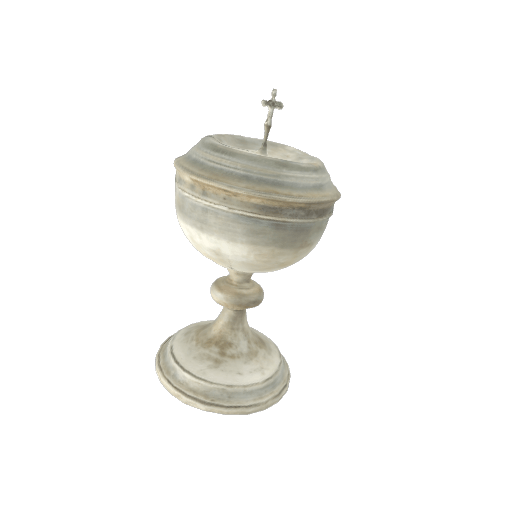Ciborium
The ciborium is a sacred vessel used during religious ceremonies of certain Christian denominations. It is used to contain the hosts, symbol of the body of Christ. The host is an unleavened bread, distributed to each of the faithful during the Eucharist (or Communion). The Eucharist, one of the seven sacraments of the Catholic Church, commemorates the last meal of Jesus Christ and celebrates his sacrifice. It takes place at masses, weddings, baptisms, and funerals.
In the Catholic religion, baptized children take part in the Eucharist for the first time around the age of 7, on the occasion of their “First Communion”. To prepare for this event, they attend catechism classes.
The sacristan is the person in charge of the preparation and maintenance of the objects and other items used during religious ceremonies. They are also responsible for welcoming visitors. The sexton maintains the interior and exterior of the church, and also acts as a gravedigger.
References
Date: 1869–1950
Origin: North America
Owner: Fabrique de la paroisse Saint-Donat. Saint-Donat.
Sources:
Gaumond, C., & Bouchard, R. (with Perron, F.). (n.d.). Les fonctions de la sacristine [The sacristan’s functions]. L’inventaire du patrimoine immatériel religieux du Québec (IPIR). Retrieved July 25, 2022, from http://www.ipir.ulaval.ca/fiche.php?id=184
Lessard, M. (2014). La nouvelle encyclopédie des antiquités du Québec [The new encyclopedia of Quebec’s antiquities]. Éditions de l’Homme.
